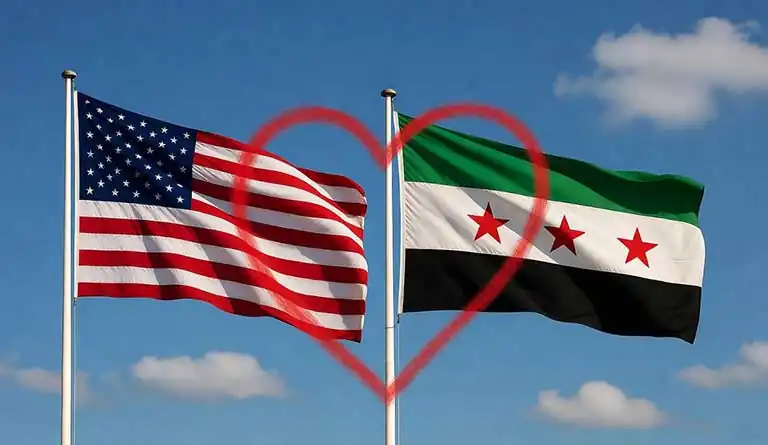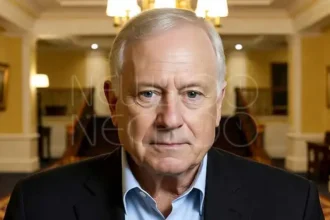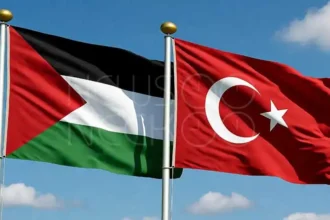A Surprising Turn in Middle East Politics
Something unusual happened in Washington recently. For the first time in many years, the United States prepared to welcome a leader from Syria—a country it has barely spoken to in over a decade.
The visitor wasn’t just anyone. He was the interim president of Syria’s northwest region, a place most Americans have never heard of but one that matters deeply in the Middle East puzzle. His planned visit to American soil represents something bigger than a simple meeting. It marks a complete change in how America deals with Syria.
To understand why this matters, we need to go back a few years.
The Long Silence Between Two Countries
Syria and the United States used to talk. They had their differences, sure, but they talked. Then, in 2011, everything changed. A civil war broke out in Syria. The fighting was brutal. Millions of people fled their homes. Cities turned to rubble. Children grew up knowing only war.
The American government looked at what was happening and made a decision: it would not work with Syria’s government. It closed its embassy. It stopped talking to Syrian leaders. It imposed strict rules—called sanctions—that made it almost impossible to do business with Syria.
For more than ten years, this silence continued. Syria became a forbidden place in American foreign policy. Politicians in Washington rarely mentioned it except to condemn it. The country fell off the radar for most Americans, even as the war dragged on and on.
You Might Like it: Trump’s Plan for a Refugee System That Picks People By Race
A Region Within a Region
But Syria isn’t just one place controlled by one government. The civil war broke it into pieces, like a shattered plate. Different groups control different areas. Some are backed by Russia. Others by Iran. Some by Turkey.
The northwest region of Syria is one of these pieces. It has its own interim president—someone who runs things day to day while hoping for a better future. This region has become home to millions of people who fled the fighting elsewhere in Syria. They live in camps, in damaged buildings, in whatever shelter they can find.
For years, this region existed in a kind of diplomatic darkness. Major countries didn’t know what to do with it. Was it part of Syria? Was it separate? Should they talk to its leaders or ignore them?
America mostly chose to ignore them. Until now.
Why the Change of Heart?
So what happened? Why would the United States suddenly decide to host this Syrian leader?
The simple answer: the world has changed.
America’s relationship with the Middle East has always been complicated. For decades, American leaders tried to shape what happened in that part of the world. Sometimes it worked. Often it didn’t. And it cost tremendous amounts of money and, more importantly, American lives.
Recently, American policy makers started asking new questions. Maybe, they thought, we need to try something different. Maybe refusing to talk to people doesn’t actually solve problems. Maybe engagement—even with those we disagree with—might lead somewhere better than silence.
There’s also a practical side. Syria’s civil war created a massive refugee crisis. Millions of Syrians now live in Turkey, Lebanon, Jordan, and Europe. These host countries are struggling. They’re asking for help. And some are starting to push refugees back toward Syria, whether it’s safe or not.
American officials realized they couldn’t ignore Syria forever. If they wanted to help refugees, if they wanted to prevent new conflicts, if they wanted any say in Syria’s future—they had to start talking to someone.
What This Visit Really Means
The interim president’s visit to the United States isn’t just a meeting. It’s a symbol. It says: “We’re willing to try something new.”
For the Syrian leader, stepping onto American soil is huge. It gives him legitimacy—a fancy word that means people take him seriously. It suggests that maybe, just maybe, the international community is ready to work with leaders in Syria’s fractured regions.
For America, it’s a risk. Critics will surely complain. They’ll say the US is betraying its principles by talking to Syrian leaders. They’ll argue that this sends the wrong message. They’ll worry about what allies and enemies will think.
But supporters of the decision have a different view. They argue that talking doesn’t mean agreeing. They say diplomatic engagement is how you solve problems, not by looking away. They point out that ignoring Syria for over a decade didn’t stop the war or help the refugees.
What Happens Next?
Nobody knows yet what will come from this visit. Will it lead to new aid for refugees? Will it open channels for more communication? Will it change anything on the ground in Syria?
Maybe. Maybe not.
What’s certain is that this represents a shift—a willingness by the United States to reconsider its approach to one of the Middle East’s most difficult problems.
The Syrian civil war has lasted longer than World War II. An entire generation has grown up knowing nothing else. Traditional approaches haven’t worked. Perhaps it’s time, as this diplomatic breakthrough suggests, to try something different.
As the interim president prepares for his visit, millions of Syrians watch and wait. They’ve learned not to hope too much. But they haven’t stopped hoping entirely.
And sometimes, in diplomacy as in life, small steps forward are how long journeys begin.
For more updates, Visit Newsneck












